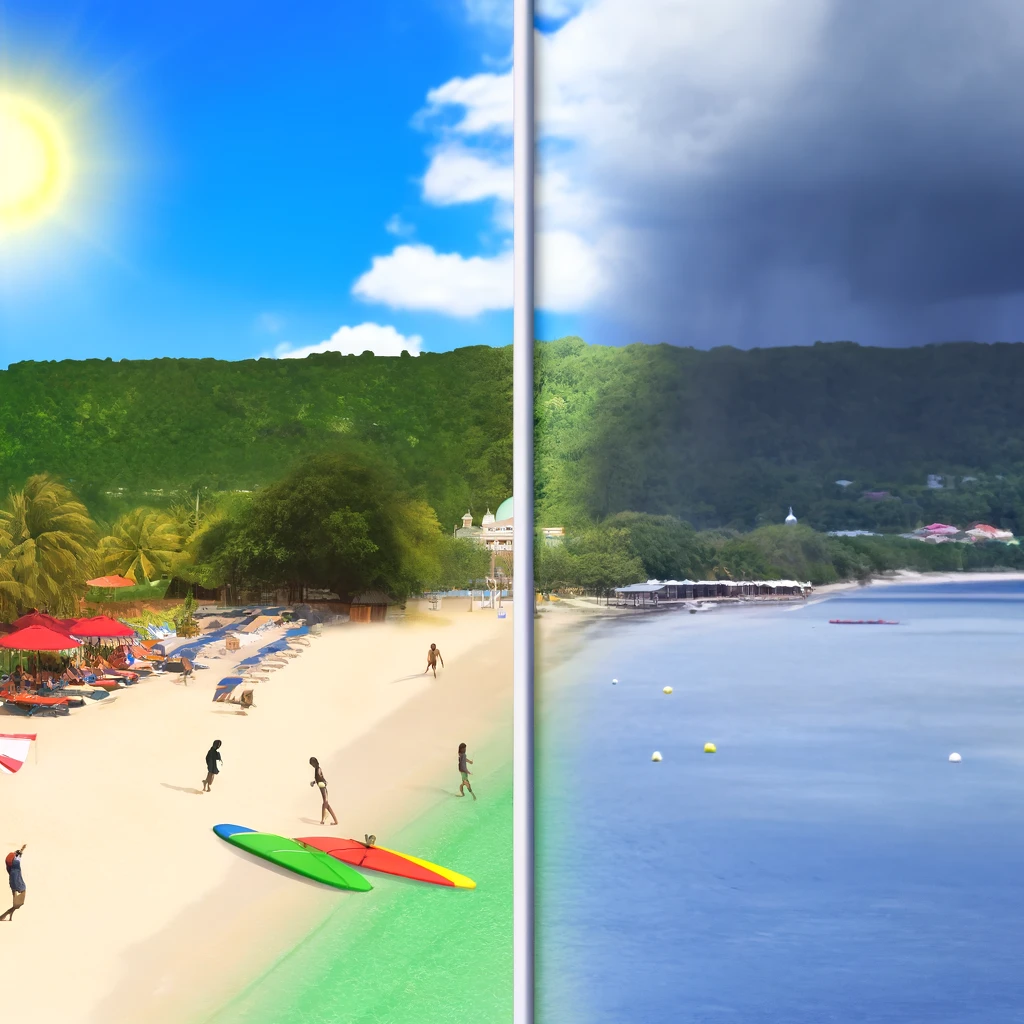Timing is essential when planning a visit to Jamaica. This Caribbean island, known for its laid-back vibe and stunning natural beauty, can provide idyllic experiences under the right weather conditions. However, certain months can dramatically affect the quality of your trip due to increased risk of hurricanes and substantial rainfall, which could lead to less-than-ideal holiday memories.
We understand the allure of Jamaica’s warm beaches and vibrant culture. To enlighten travelers, we aim to identify the periods that might hinder your ability to enjoy everything the island has to offer. The most challenging times to visit are typically from June to November, coinciding with the Atlantic hurricane season.
The last hurricane to make landfall in Jamaica was Hurricane Sandy, which struck in October 2012. Although severe hurricanes are relatively rare in Jamaica, hurricane-related weather can still disrupt travel plans, making it crucial to consider these patterns when booking your trip.
Identifying the Worst Times to Travel to Jamaica
In planning a Jamaican getaway, it is critical to consider the island’s weather patterns. We guide you through the periods prone to disrupt travel plans, particularly Jamaica’s hurricane season and statistical weather data.
Hurricane Season Overview
Jamaica’s hurricane season runs from June 1 to November 30, with the risk of tropical storms and hurricanes peaking from August to October. Travel during this time can be impacted by unpredictable weather, including heavy rains and high winds. It is advised to keep abreast of weather forecasts and advisories if planning a trip during these months.
Statistical Peak of Severe Weather
Historically, the statistical peak of severe weather in Jamaica occurs in September. During this month, the likelihood of hurricanes and tropical storms is at its highest, based on historical patterns and weather data. This period coincides with the heart of the Atlantic hurricane season, demanding added vigilance for visitors.
Historical Weather Events
When planning a trip to Jamaica, it is essential that we understand the historical weather patterns, particularly hurricanes, which can significantly influence our travel experience. The timing of these events is crucial in order to avoid disruptions during our stay.
Recent Hurricanes Impacting Jamaica
Jamaica is no stranger to hurricanes, given its location in the Caribbean. These powerful storms can occur from June to November, which is known as the Atlantic hurricane season. Our focus will be on the impact of recent hurricanes on Jamaica.
-
- Hurricane Sandy (2012): Affecting Jamaica in October 2012, Sandy was classified as a Category 1 hurricane when it hit the island, causing extensive damages to infrastructure and agriculture. Sandy was significant enough to prompt hurricane warnings and led to evacuations.
-
- Hurricane Matthew (2016): While Jamaica was spared the full force of Hurricane Matthew in October 2016, the storm still brought heavy rains and winds to the island as a potent Category 4 hurricane. It served as a reminder of the importance of being prepared during hurricane season.
-
- Hurricane Elsa (2021): Although not making direct landfall, Hurricane Elsa passed close to Jamaica in July 2021. As a Category 1 hurricane, it brought gusty winds and rainfall, highlighting Jamaica’s vulnerability during hurricane season and the need to take precautions when traveling during these months.
Understanding these historical weather events helps us make informed decisions on the safest times to visit Jamaica, ensuring a more enjoyable and worry-free vacation.
